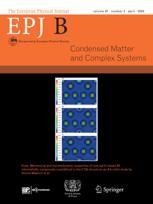Testing particle scattering and reflection in graphene
Testing the quantum effects of Andreev reflection in the wonder material could have positive implications for quantum technology
New York | Heidelberg, 25 September 2023
 Humanity stands on the verge of two major revolutions: the boom in 2-dimensional supermaterials like graphene with incredible properties and the introduction of quantum computers with processing power that vastly outstrips standard computers.
Humanity stands on the verge of two major revolutions: the boom in 2-dimensional supermaterials like graphene with incredible properties and the introduction of quantum computers with processing power that vastly outstrips standard computers.
Understanding materials like graphene, made of single sheets of atoms, means better investigations of the properties they display at an atomic level. This includes how electrons behave around superconductors — materials that, when cooled to temperatures near absolute zero, can conduct electricity without energy loss.
When a superconductor is sandwiched between metal materials, a type of scattering called crossed Andreev reflection may appear, and in an s-wave superconductor junction, the Andreev reflection usually induces correlated opposite spin in electrons. This can be used to induce entanglement, a quantum phenomenon that is critical for quantum computers.
In a new paper in EPJ B, author Rui Shen, from the National Laboratory of Solid State Microstructures and School of Physics at Nanjing University, China, and his co-authors theoretically assess nonlocal transport and crossed Andreev reflection in a ferromagnetic s-wave superconductor junction composed of the gapped graphene lattices.
“A staggered potential can be induced by growing the ferromagnetic graphene on the boron nitride substrate, leading to the symmetry breaking and the fully spin-polarized electron state,” Shen says. “The Fermi level is properly tuned via gate voltage or doping so that it crosses only one conduction band in the left lead and one valence band in the right lead.”
Shen explains that the team predicted a pure equal-spin crossed Andreev reflection signal in the antiparallel configuration of the ferromagnetic exchange fields of two leads and a pure opposite-spin CAR signal in the parallel configuration.
“The equal-spin and opposite-spin correlations can be easily switched by swapping the exchange fields. The pure equal-spin signal here is absent in the gapless graphene junction,” he continues. “The pure equal-spin crossed Andreev reflection (opposite-spin crossed Andreev reflection) in our model is achieved not only at the Dirac point but over a large voltage range, suggesting the highly efficient nonlocal splitting of the Cooper pairs with spin-triplet (spin-singlet) pairing correlations.”
Shen adds that the time-reversed process of the CAR is called the Cooper pair splitting, and it represents one of the effective ways to obtain entangled states in quantum systems.
“This may have significant applications in quantum communication and quantum computation,” he concludes.
Reference: Yan, W., Zeng, W. & Shen, R. Pure equal-spin and opposite-spin crossed Andreev reflection in spin-orbit-coupled graphene. Eur. Phys. J. B 96:83 (2023). https://doi.org/10.1140/epjb/s10051-023-00555-6
Further Information
For more information visit: www.epj.org
Services for Journalists
The full-text article is available here.
Contact
Sabine Lehr | Springer | Physics Editorial Department
tel +49-6221-487-8336 | sabine.lehr@springer.com
